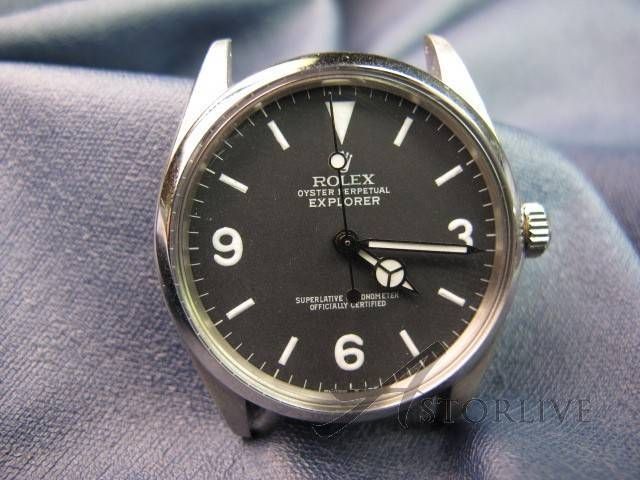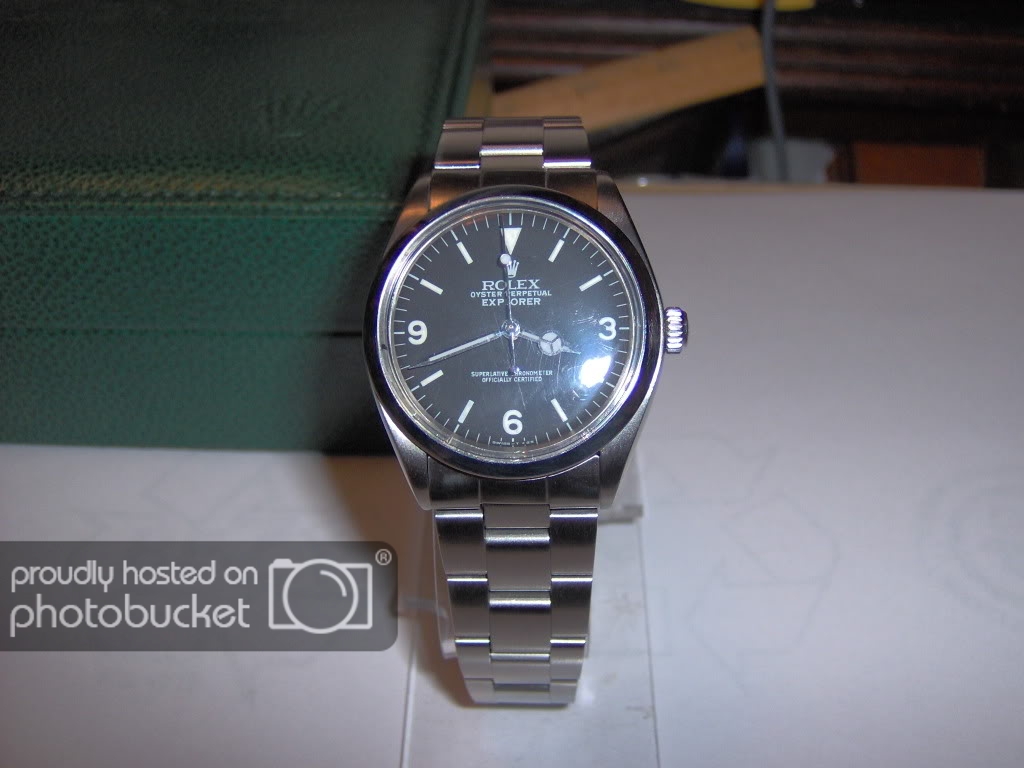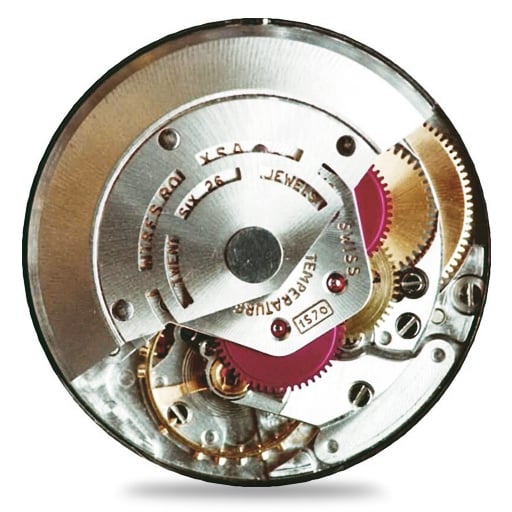Click to see the details
market
Click to see the details
history
| Name | 1002 |
| Family | Explorer |
| Gender | Mens |
| Movement | Rolex 1570 (Details) |
| Years in Production | 1966 |
| Mechanism | Automatic |
| Chronometer | Yes |
| Hacking | Yes |
| Date Function | No |
| Quickset | No |
| Chronograph | No |
| Power Reserve (Hours) | 42 |
| Frequency (bph) | 19, 800 |
| Jewel Count | 26 |
| Second Hand | Sweep |
| Case Material | Stainless Steel |
| Shape | Round |
| Bezel Material | Stainless Steel |
| Crystal Material | Acrylic |
| Band Replaceable | Yes |
Mechanism:
The 1570 movement superseded the 1560, but shared the vast majority of its elements, with a few notable improvements. The 1570 marked the third generation of the 1500 series. It comes with the balance assembly Rolex p/n 8106, again with a Breguet hairspring. However, it’s with a higher frequency of 19,800 bph, or 2.75Hz.
The 1570 was also equipped (starting in 1972) with a hacking feature. The 1570 became one of the most popular and highly regarded movements Rolex had so far produced. Used in the continuing series of Oyster Perpetuals, it was still powering the 5512 Submariner in 1978 and even the Explorer ref. 1016 until the end of its run in the late eighties.
The 1570 was also equipped (starting in 1972) with a hacking feature. The 1570 became one of the most popular and highly regarded movements Rolex had so far produced. Used in the continuing series of Oyster Perpetuals, it was still powering the 5512 Submariner in 1978 and even the Explorer ref. 1016 until the end of its run in the late eighties.
Family Notes:
Rolex presented the first very Explorer in 1953 to commemorate Sir Edmund Hillary and Tenzing Norgay’s pioneering climb to the 8,848-meter summit of Mount Everest, the earth’s highest mountain. Over 60 years later, the Explorer still remains a very popular choice among Rolex’s collection of sports watches.
The Explorer was based on the already existing and sturdy Bubbleback series of watches, which has been modified by Rolex for its more audacious clients. In 1952, the references 6098 and 6150 (both using the A296 movement) were in fact the first prototype watches to be used by climbers; they were watches with white dials and leaf shaped hands, which didn’t bear the name Explorer yet. In 1953, these models became the references 6298 and 6350, when they were fitted with the typical Explorer-type 3-6-9 dial and later with the Mercedes hands. Before Hillary and Norgay climbed the Everest, Rolex didn’t name their watches Explorer. Although Rolex registered the Explorer trademark on January of 1953, the Explorer gained its name after Hillary and Norgay climbed up the Everest and “Explorer” began to be added on the Ref. 6350, at the end of 1953.
The Explorer was based on the already existing and sturdy Bubbleback series of watches, which has been modified by Rolex for its more audacious clients. In 1952, the references 6098 and 6150 (both using the A296 movement) were in fact the first prototype watches to be used by climbers; they were watches with white dials and leaf shaped hands, which didn’t bear the name Explorer yet. In 1953, these models became the references 6298 and 6350, when they were fitted with the typical Explorer-type 3-6-9 dial and later with the Mercedes hands. Before Hillary and Norgay climbed the Everest, Rolex didn’t name their watches Explorer. Although Rolex registered the Explorer trademark on January of 1953, the Explorer gained its name after Hillary and Norgay climbed up the Everest and “Explorer” began to be added on the Ref. 6350, at the end of 1953.
Item created by: gdm
on 2019-01-02 12:09:02
Last edited by: gdm on 2019-01-02 12:16:02
If you see errors or missing data in this entry, please feel free to log in and edit it. Anyone with a Gmail account can log in instantly.
Last edited by: gdm on 2019-01-02 12:16:02
If you see errors or missing data in this entry, please feel free to log in and edit it. Anyone with a Gmail account can log in instantly.




